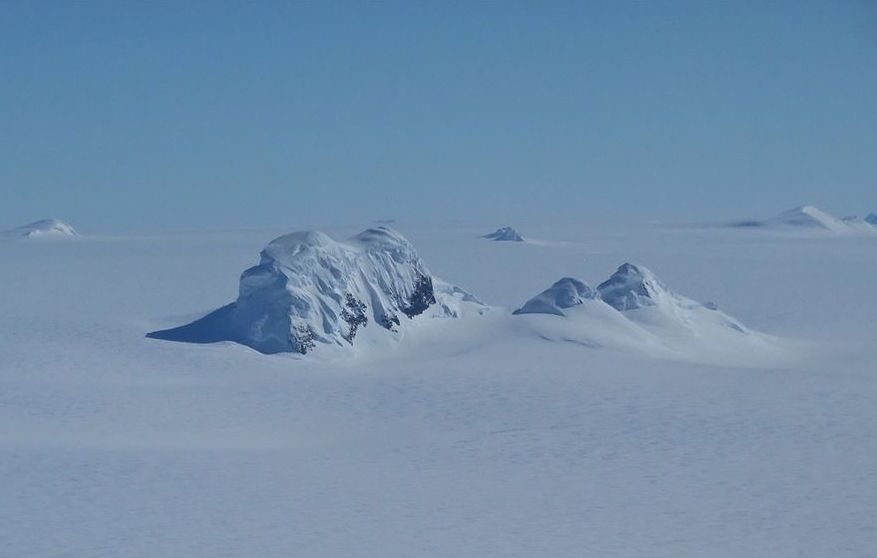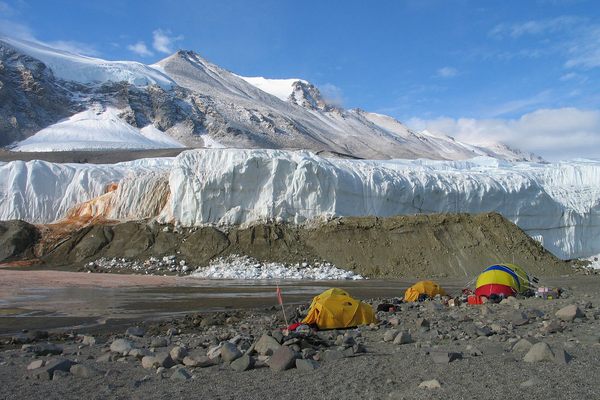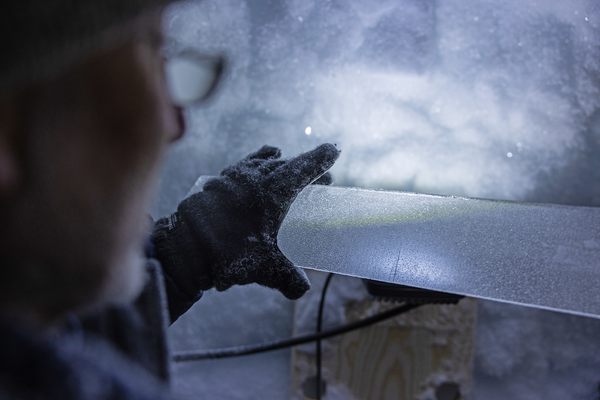Finding the Hidden Mountains Beneath Antarctica’s Ice
How researchers revealed the continent’s undiscovered topography.

There are mountains under the ice in Antarctica. That’s how thick it is, in places. Hidden under the vast frozen expanse of the southern continent, a complicated topography determines how the ice can move. In parts of the continent, satellite imaging has revealed the shape of the land below the ice. But those satellites have a blind spot—because of the angle of their orbits, they don’t capture data about a crucial area close to the South Pole, where the West Antarctic Ice Sheet meets the East.
The ice sheet in the west is smaller and less stable than the ice sheet in the east, and scientists thought that, if the western sheet were to start to disappear, ice from the east could flow in. Antarctic ice sheets aren’t static; in ice streams, for instance, a section of ice flows faster than the ice around it. (“Faster” is relative here; we’re talking less than a mile per year.)
In the past few years, a project led by the British Antarctic Survey, called PolarGAP, has worked to collect data to fill in satellites’ blind spots, using planes equipped with radars and other tools that can give a sense of what’s happening under the ice. In a new paper, published in Geophysical Research Letters, a team of scientists describes the discovery of mountain ranges and troughs under the ice in that crucial zone where east and west ice sheets meet.

“We expected to find mountainous subglacial topography but the size of the troughs did come as a surprise because we had no indication that they were there before,” says Northumbria University’s Kate Winter, the lead author of the paper.
Those mountains will limit the movement of ice from East Antarctica to the West. “The mountains will act as a barrier, holding back the East Antarctic Ice Sheet,” says Winter. The troughs, though, provide a path through the mountains; Live Science calls them “massive ice highways,” which could ultimately speed the flow of ice from the interior of the continent into the sea as the planet warms.
This new information will help modelers predict how Antarctica’s massive ice sheets will respond to climate change. There are more areas of the continent, though, that could be explored using ice-penetrating radar surveys. “The ice is over four kilometers thick”—that’s close to 2.5 miles—“in places, so we’re always finding new things under the ice,” says Winter. That includes lakes, mountains, ridges, troughs, and even volcanoes.











Follow us on Twitter to get the latest on the world's hidden wonders.
Like us on Facebook to get the latest on the world's hidden wonders.
Follow us on Twitter Like us on Facebook